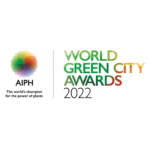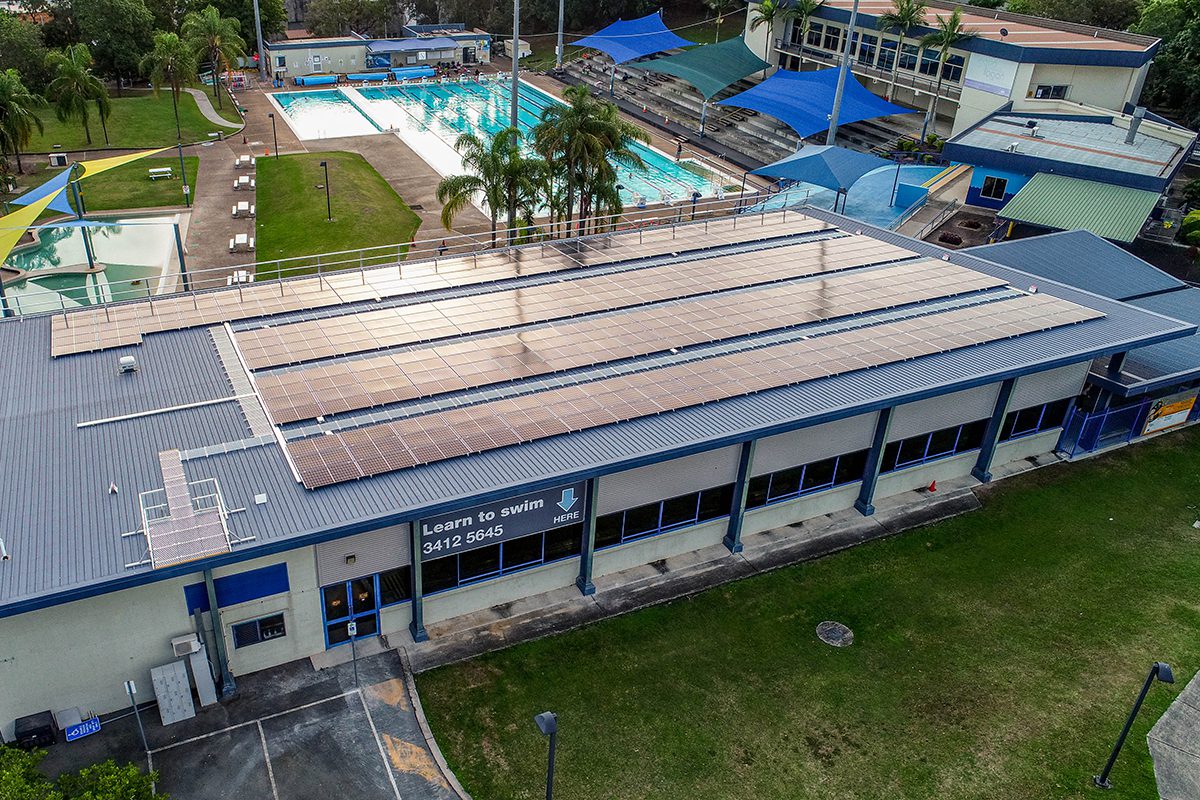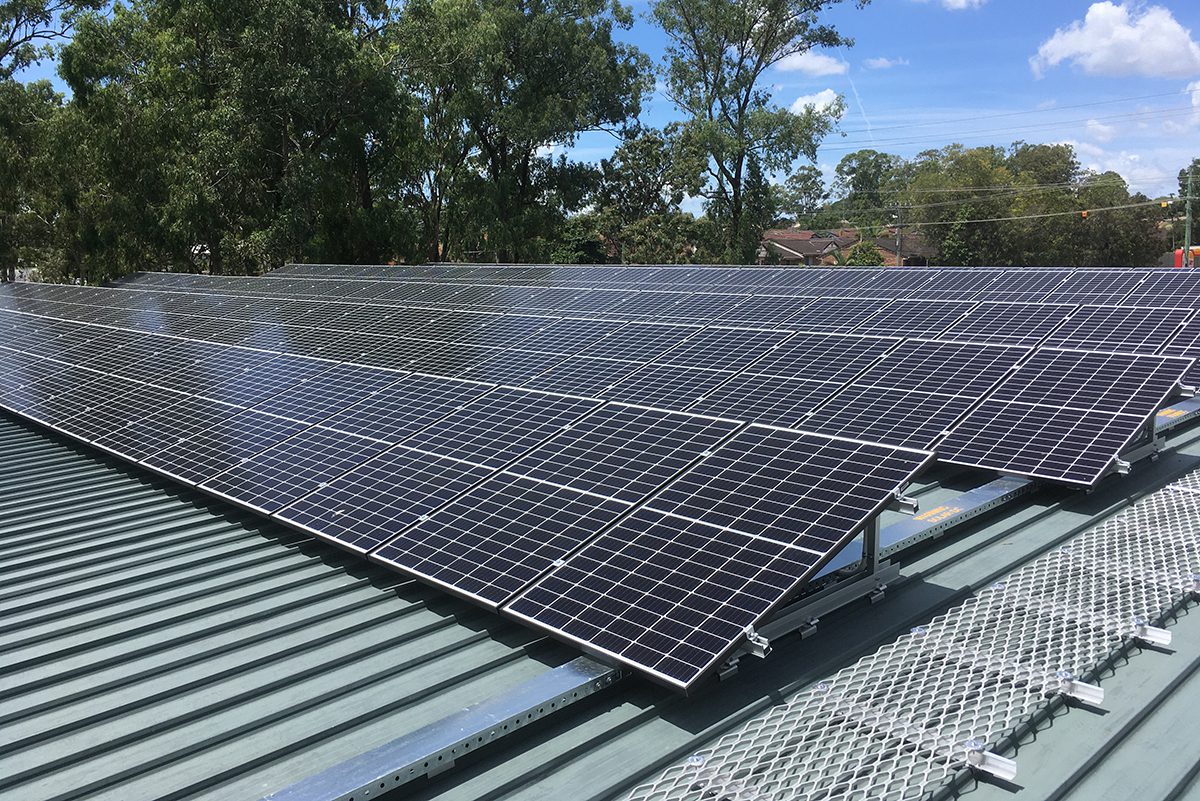Addressing the urban challenge
Breadth of the issue – How are the problem(s) that are being tackled by your initiative affecting citizens/local businesses or a significant component of the local wildlife?
The City of Logan is one of the largest and fastest growing local governments in Australia. With a population nearing 342,000 and a land area of 959 square kilometres, the Southeast Queensland Regional Plan predicts the city to grow to 568,000 residents by 2041 and will need to accommodate an additional 90,000 dwellings. To support this growth Logan City Council will need to balance lifestyle, social, liveability, economic and environmental outcomes. As a large and complex organisation, Council has $6.5 billion worth of city assets and an annual budget of $940 million. Over 1,700 staff provide more than 85 diverse services to the community.
The impacts on our environment from population growth and development puts incredible pressure on our natural environment and has potentially significant impacts on climate change. This issue has been identified as a major concern for our community through community surveys conducted over the last few years. The Logan Listens community survey canvasses the community and bushland protection, and waterway health are consistently in the top 5 concerns identified for the last several years.
With that in mind, the LCC Climate Change Resilience Framework, which includes a Climate Change Resilience policy, Climate Change Resilience Strategy, Sustainability policy and framework also supported by a Natural Environment Strategy have been designed to manage organisational and community risks associated with climate change, and to align with international commitments including:
- United Nations Sustainable Development Goals
- 2016 Paris Climate Change Agreement
- 2015-2030 Sendai Framework for Disaster Risk Reduction
Depth of the issue – How seriously are the problems being tackled by your initiative impacting the life of the citizens/businesses/wildlife concerned?
Since 2018, the City of Logan has experienced multiple climate related severe weather events which include floods, droughts, heatwaves, and bushfires. The devastation of these increasingly frequent severe weather events has significant impacts on climate change. The most recent flood event (February 2022) had significant impacts including:
- 548 families/properties impacted;
- 60 City of Logan suburbs have been identified as having some residential properties potentially flood impacted;
- Over 1,500 tonnes of flood damaged household and business related assets being taken to landfill;
- Regionally these floods resulted in 13 deaths, thousands of homes inundated with contaminated flood waters and billions of dollars’ worth of damage.
The City of Logan Climate Resilience Framework incorporating our Sustainability Policy the Climate Resilience Policy, Climate Resilience Strategy, will guide, motivate, and ensure our goal of achieving climate resilience.
Our ongoing focus as we deliver the strategy, policy and actions will be to address three key elements of climate change resilience being:
- Mitigation – reducing and avoiding emissions.
- Adaptation – responding to the impacts of a changing climate.
- Resilience building – to have an increased level of adaptive capacity across the organization.
The adopted strategies, plans and policies provide the framework that will ensure that climate change mitigation and adaptation is a core component of planning and is mainstreamed into Council’s functions and activities. Through delivery of the Framework, the City of Logan is well placed to demonstrate the benefits from economic development opportunities that may eventuate due to our proactive climate change resilience commitment.
The power of plants and natural ecosystems to deliver benefits
How is the initiative shaped by scientific evidence of the potential for plants and natural ecosystems to deliver benefits?
LCC took the step to include bold environmental and climate change in our Corporate Plan including:
- A commitment to achieve carbon neutrality/net zero by the end of 2022.
- Continue to implement sustainability initiatives including increased use of renewable energy, energy efficient technology and carbon reduction projects.
- Support the community to become more sustainable and conserve and restore private land.
This commitment is reinforced through our strong strategic outcomes through our town planning instruments – the Logan Planning Scheme. This protects natural environment areas, sustainable farming areas and ecosystem services through zoning. This sets out the following natural environment and climate change strategic outcomes:
- No net loss of biodiversity and ecological values is achieved by protecting and enhancing flora and fauna species.
- Ecosystems of waterway corridors, wetlands and their riparian areas are protected and enhanced.
- Biodiversity and ecological processes of regional terrestrial and aquatic ecosystems are protected and enhanced.
- Vegetated areas and waterways are protected and enhanced to function as ecological links and corridors.
- Greenhouse gas emission and the community’s reliance on greenhouse gas emitting energy sources, are reduced.
To achieve these outcomes, the following has been implemented by LCC through our town planning legislative mechanisms:
- 84.1% of the city has all native trees and wildlife habitat protected.
- 28,277 ha of environmental and wildlife corridors mapped and protected
- Area of city that is regional landscape and rural production, rural living, environmentally/recreation/open space zoned or is mapped with environmental corridors = 72.82%
- Protection of:
- 2,633 hectares of wetlands
- 2,177 kilometres of waterways
How has the city exploited the potential of plants and associated ecosystems to deliver more than one benefit?
To monitor and measure these outcomes an innovative scientific based model was developed that recognises the potential for plants and natural ecosystems to deliver multiple benefits.
To recognise this, part of the framework included the development of a city wide Ecological Significance map using multiple values, methodologies and ecological inputs including:
- Biodiversity Assessment and Mapping Methodology
- Common Nature Conservation Classification System (CNCCS) and Expert Panel
- Tract size of ecological significant areas and corridors
- Relative Ecosystem Size
- Ecosystem Diversity;
- Context and connection;
- Special Biodiversity Areas;
- Corridor Links, Context and Connection;
- Urban and Rural land;
- Land bordering Environmental Parks;
- Waterway and Wetland buffers.
By using a range of inputs, it allows us to exploit the potential of plants and associated ecosystems to deliver more than one benefit.
Innovative and Collaborative Solution
How does the initiative show evidence of feasibility, including on-going financial and logistical support?
One of the key fundamental outcomes achieved since 2018, is an increase of our city’s green canopy cover – an incredible achievement given the development and growth rate of the city. This outcome is independently verified through the Greener Spaces Better Places network (https://www.greenerspacesbetterplaces.com.au/), who have prepared an annual report in relation to their 202020 Vision program titled “Where will the trees be?” (https://www.greenerspacesbetterplaces.com.au/guides/where-will-all-the-trees-be/).
This report is based on their national benchmarking research of green cover in Australian suburbs and cities which looks at which places are gaining green cover and why. Highlights from their 2019/2020 report include: (refer below)
A special mention is made to Logan City Council (refer Page 34 – 35) identifying Logan City Council (QLD) as the best on ground Council (suburban category), recording a significant increase in green cover alongside population and increase in hard space. The report showcases our Bahrs Scrub land acquisitions and our conservation covenants.
This is the third annual report they have prepared; previous reports are available at:
https://202020vision.com.au/media/162691/wsattg_combined-lr.pdf
https://202020vision.com.au/media/7145/where_are_all_the_trees.pdf
In what ways is the initiative innovative?
To achieve these outcomes, a range of innovative strategies, polices were developed including:
- Climate Change Resilience Strategy with the strategic vision: That Logan City Council, and our city’s environment, community, and economy, will be resilient to the impacts of a variable and changing climate. During community consultation this strategy received over 300 community comments. This feedback showed strong support for the Strategy. Focusing on shared responsibility, education, business support and balancing the growth of our city with the impacts on the natural environment, including how we’re addressing the city’s carbon emissions.
- Natural Environment Strategy – outlines how we will balance growth and development with our natural environment while meeting the challenges of a changing climate. It provides a road map to ensure The City of Logan’s natural environment is protected, enhanced, connected, and celebrated to provide valued spaces for people, plants and animals now and into the future.
- Environmental Conservation Partnerships Policy and Program – Supports the protection, maintenance and enhancement of our natural environment, ecological corridors and waterways through a network of focused community partnerships and targeted private land conservation initiatives.
- Environmental Management Planning Scheme Policy – includes an innovative environmental offset process that achieves a net gain on trees in the ground where vegetation clearing is unavoidable through development. Council has already planted over 77,000 trees funded by the development industry and has achieved a net growth in green canopy across the city over the last couple of years.
How is the initiative supported by collaborative working across disciplines and sectors?
In developing our vision, and these strategies, plans and policies, extensive community and professional consultation and engagement was undertaken. This included:
- Community City Visioning process – a city wide community city vision process which put our community at the heart of our future decision-making by creating a shared vision. The Logan Community Vision was developed over a ten-month period, from September 2020 to June 2021. The Logan Community Vision statement, themes, actions and ideas guide and influence how we deliver programs and services in the short, medium and long-term.
- Professional and cross discipline engagement – a 6 week process where engagement and consultation through working groups, meetings and correspondence/communications with professional groups including civil and environmental engineers, health professionals, town planners, architects, ecologists, social planners, compliance and development assessment professionals.
- Public ‘Have Your Say’ community consultation – each strategy was on Council’s have your say platform, where it was open for comment to the public and community. Promotion included social media, posts, local newspapers, and media releases.
- Professional and community participation during the engagement phases has been extremely positive with high participation and engagement rates achieved.
LCC also recognizes the importance of community partnerships in achieving our vision and building climate change resilience – which led to the enhancement of our Environmental Conservation Partnerships – a program that provides private landholders incentives to conserve and enhance bushland and trees on their own properties.
Implementation, Impact and Replicability
How has the initiative had a ripple effect beyond the scope of the initiative itself, thereby demonstrating a change in the city’s and/or its partners’ way of working with plants?
Some of the initiatives that have demonstrated high levels of learning and transferability include:
- Leadership of a Regional Climate Resilience Alliance – 8 neighbouring Councils have joined this alliance which will develop a transferable regionally alliance model to take action on climate change and a community education program breaking down political barriers. This program is designed to be transferable not only within Australia but internationally. This will mean that the outcomes will be shared with a total community population of almost 4 million people across multiple cities and regional local government areas.
- LEAF – community education and engagement – a free environmental event held annual that attracts around 10,000 visitors each year from a broad range of cities and areas. The event showcases innovations in relation to building climate change resilience, sour natural environment and supporting the community to develop environmental stewardship. A key feature of the event is solar opportunities, electric vehicles with a family focused theme.
- Local business partnership (new solar panel optimizer and monitoring technology) – a program run to support an innovative local business that developed new technology to monitor and enhance the performance of solar panels using cutting edge solar panel optimizers. Several neighbouring organisations have asked to replicate this initiative.
- Support for local households – LCC provided a program to support households to install roof top solar installations in partnership with State and Federal government agencies. The success of this program was shared widely through State and Federal government networks.
How have other cities expressed interest in the initiative, or what potential does it have to interest other cities and be customised to their own circumstances?
Logan City Council is well-placed to drive broader uptake of climate change planning in Australia and across the globe, by providing case studies of our strategic initiatives aimed at enhancing organisational governance in relation to reducing, mitigating and adapting to the potential risks of a changing climate. Some additional very transferable learnings and initiatives include:
- The City of Logan All Hazard Risk Assessment has transitioned from the National Emergency Risk Assessment Guidelines (NERAG) to the Queensland Emergency Risk Management Framework (QERMF) and includes specific actions in response to increasing extreme heat events, bushfires and floods.
- City of Logan Carbon Reduction Strategy and Action Plan – provides a road map to achieve carbon neutrality by 2022.
- Delivery of the Sustainability Policy and Framework – adopted by Council to embed sustainability in all decision-making and activities, including climate action.
- Development of an Energy Management Framework and automated Energy Management Dashboard that:
- allows us to monitor and track electricity use, costs and carbon emissions over time; and
- help build organisation capacity and awareness of the value of energy efficiency
- Delivery of a range of innovative actions to transition our fleet to a cleaner and more sustainable fleet
Sustainability and Resilience
What efforts have been made to reduce the carbon footprint of the initiative?
Logan City Council has made a commitment to achieving a net gain of ecological values and increased habitat for native wildlife while being one of the fastest growing regions in Australia. Council has successfully delivered a range of initiatives, on-ground projects, biodiversity enhancement programs that has resulted in a gain of green canopy across the city.
The range of adopted strategic strategies, policies and plans combine to form a holistic living green for biodiversity. This suite of initiatives spans up to 50 years (River Visions) with a range of actions that can be sustained over time.
How have the anticipated impacts of climate change been considered?
LCC has already achieved great success in delivering actions that will reduce the carbon footprint of not only our organisation but the community as well. These initiatives have been designed and selected with consideration of environmental, economic, and social outcomes. All are realistic achievable and ongoing monitoring has proven they are delivering. Selected on these basis means they are designed and implemented so that long-term needs for management and maintenance are reduced and can be met.
What processes does the initiative include for it to be considerate in its use of soils and other natural resources?
The City of Logan has demonstrated its leadership and drive for living green for climate change and delivering innovative climate change action through our framework. Overall, these projects save Council hundreds of thousands of dollars each year and reduces our CO2 emissions by more than 1,500 tonnes annually.
LCC’s climate change framework not only demonstrates our commitment to building climate change resilience but has also delivered a range of projects and initiatives that have already successfully reduced our carbon footprint, achieved significant social, economic and environmental outcomes, while embracing our city’s vision to be a green city full or pride, opportunity and culture.
Monitoring, Maintenance, and Management
How has the initiative been designed and implemented so that long-term needs for management and maintenance are reduced and can be met?
- Delivery of an Australian first, off-grid water quality solution via a solar powered electro-chlorination facility which includes an off-grid Tesla battery.
- Pioneering an innovative method with the operation of a pilot facility to recover energy from biosolids (sludge) at our Loganholme wastewater treatment plant. The biosolids are dewatered and dried, before carbonised in a gasifier. The gasifier turns biosolids into biogas, a renewable energy that is used in the drying process. The biochar produced is an organic soil improver where nitrogen and phosphorus are bio-available, but carbon is sequestered. The $17 million Biosolids Gasification Project reduces the volume of biosolids by 90 per cent, saving ratepayers around $500,000 annually in haulage costs, while significantly reducing carbon emissions.
- Cedar Grove Environmental Centre which delivered Queensland’s first sustainable wastewater treatment plant. This wastewater treatment plant delivers a net environmental benefit for the surrounding catchment and provides an industry best-practice demonstration.
- A 1.16 megawatt on ground solar farm at our Waste Water Treatment plant in Loganholme.
- Roof top solar installations on Council facilities – successful installation of over 700kW of PV solar across 11 sites saving over $200,000 per annum.
- Landfill gas collection and electricity production system at our largest waste collection site at Browns Plains. This system collects the methane gas through pipes inside the landfill cells and diverts it to an on-site power generation plant. At the plant, the methane is converted into energy. The power generated is enough to supply electricity to 2,000 homes.
What protocols are in place to facilitate monitoring of results?
Since 2018, a number of ground-breaking, innovative projects have been successfully delivered which include:
- Resilient Rivers Initiative – agricultural sector, local producers including turf farmers, – a regional program that supported land producers through restoration of waterways, planting vegetation to stabilise land erosion, separation of livestock watering from waterway banks, and included the development of a turf farm code of practice to support and guide businesses to achieve increased production and more efficient use of fertilizers but also to ensure run off is controlled and environmental outcomes can be achieved in partnership with economic outcomes.
- LEAF – community education and engagement – attended by around 10,000 community members to learn about sustainability, climate change and environmental stewardship.
- Innovative flood modelling – leading to town planning controls on development within high risk flood prone areas.
- City wide Eco Awards – including a sustainability category to recognise and celebrate community members and organisations that align with the living green for climate change.
- Climate Change refugia – innovative mapping using threatened and locally significant species to identify areas in the city particularly important for continued biodiversity.
- In addition to these strategic actions, a range of renewable energy projects have been successfully delivered, these include the following (with more detailed provide in the Resilience section):
- Solar Farm at our Waste Water Treatment plant in Loganholme;
- An Australian first off grid water treatment facility;
- Roof top solar installations on Council facilities;
- Landfill gas collection and electricity production system at our Browns Plains landfill site.
How has the initiative been enhanced in response to monitoring of results?
Logan City Council’s living green for biodiversity suite of initiatives has had a considerable ripple effect particularly on neighbouring and nearby local governments.
Many of the key deliverables have regional collaboration at its core with mechanisms for enhanced/wider adoption of local nature-oriented practice and/or offer potential for customised replication in other cities.























